Over the past five years, SEO has become an increasingly more important channel for acquiring new customers. The advent of COVID-19 has only accelerated that trend, as people spend more and more time online. That impacts all types of healthcare companies, including providers, insurers, device manufacturers, and pharmaceutical companies. In this post, we’ll discuss some of the top challenges in the healthcare space and how to deal with them effectively. Topics we’ll cover include:
- Understanding Your SEO Priorities
- Developing an SEO Strategy
- Dealing with Multiple Audiences
- B2B Players Can’t Offer B2C Experiences (Or Can They?)
- Lack of Unique Content (for Manufacturers and Retailers)
- Adapting to New Market Conditions
Challenge #1: Understanding Your SEO Priorities
SEO is a complex space to understand as Google does not share information on how its algorithms work. Also, competitors may be investing in SEO as well, and not knowing where those investments are made makes it more difficult to understand the ROI that you’re likely to get with a given campaign.
However, there are ways to get detailed information on what keywords play the largest role in your competitor’s SEO program. Using third-party tools such as SEMrush, Searchmetrics, BrightEdge, or seoClarity, you can collect data on those keywords, and with further analysis, get a pretty decent idea as to which ones are most important to the competitor. At Perficient, we have developed a proprietary tool that allows you to take the raw data from SEMrush and get a quick market view similar to this one:
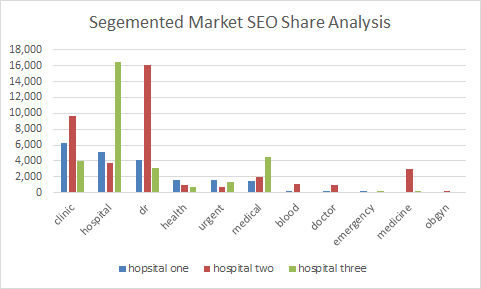
Once you have a view as to where the SEO strengths of your competitors lie, you can then begin to work on your strategy. For example, match up your priority market areas against the competitive market picture to see if there are top priority areas for you that also happen to be weak points for your competitors. When you find situations like these, they should move quickly to the top of your priority list as these are the areas that are more likely to offer high ROI.
Challenge #2: Developing an SEO Strategy
Knowing your priorities is a great first step, but there are many other elements to a strong SEO strategy. It’s great to understand what your competition is doing and what your priorities are, but there are other vital elements to the landscape. These include knowing your budget, resources, and limitations.
Mapping out your budget and resources is essential, of course. It goes without saying that you shouldn’t take on more than you can execute. One tough thing for more businesses is getting a handle on their limitations. These may have many components, such as:
- Organizational Bias: Key members of your management team may have a bias against SEO. It’s easy to be suspicious of things that you don’t understand, and SEO does appear like a dark art to many who aren’t familiar with it. Many healthcare organizations may not even have any role dedicated to driving new traffic to their website because the focus is entirely on the treatment of patients.
Even if there is such a role, Google’s lack of transparency is another contributing factor, but so is the fact that SEO results take time to show, which makes it more difficult to explain a causal relationship. Tackling this is best done by leveraging the expertise that is truly deep in their SEO knowledge and overcoming such bias through education and examples of how SEO works.
- Organizational Ignorance: A lack of understanding in the management team may not be your only issue. There can be a knowledge gap throughout your marketing and development teams. If they don’t understand that something is important, or how to execute against it, then you are not likely to find success. Many businesses implement numerous changes that should help drive their SEO only to have a development team revert those changes simply because they don’t understand why they were put in place to begin with. Education is critical here, too, and establishing best practices and processes that include frequent checkpoints to ensure things stay on track.
- Technology Challenges: If you didn’t design and build your site with SEO in mind, the chances are very high that there are issues—it’s quite easy to build a website that Google doesn’t understand or that will result in you not ranking for any valuable keywords. SEO doesn’t happen by accident—it’s the result of a deliberative process that systematically works toward driving higher rankings. One of the most significant technical challenges is the site platform itself. Most CMS and e-commerce platforms can be configured to be SEO-friendly; however, that configuration is not done by default. The investment should be made upfront when starting updates to your site platform, especially if you are making a change to your platform.
- Weak Site Architecture and Interlinking: Not only are these essential to good user experience, but they are also crucial for SEO. Creating a site with good flow will increase your conversions and make your site more likely to gain high SEO rankings.
- Poor Content: Once you have an SEO-friendly site, content becomes the primary driver of SEO success. Properly configuring your platform, having a robust site architecture, eliminating tech debt—these types of elements are table stakes. The strongest performers in SEO in any market space all have these things locked down. Once you’ve taken care of those things, creating great content is critical. The impact of investing in your content can be stunning:
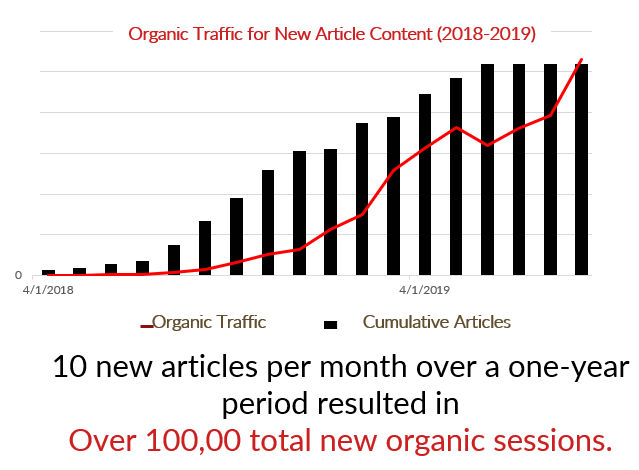
How do you start the process of understanding your limitations and moving forward from there? Start with an SEO Audit. This will expose the issues with your platform configuration, site architecture, poor content, and tech debt resulting from organizational ignorance. The discussions that follow will also help you expose management bias. Once you have all this information in hand, you can begin to work on your overall SEO strategy.
Challenge #3: Dealing with Multiple Audiences
Many medical product providers face the challenge of dealing with multiple audiences. For example, if you provide over-the-counter drugs such as Advil to your customers, an office manager would likely be looking for Advil; however, a nurse or physician’s assistant would search for ibuprofen. Other examples of these behavioral differences include Neosporin vs. Bacitracin and Band-Aid vs. adhesive bandage.
Why does this matter so much? First of all, Google recognizes that there are differences in search behaviors around terms like these. They know different audiences use different terms. For general terms, it may be better to address both audiences. That is because Google also understands that these are primarily the same thing and may have a preference for a page that serves both audiences.
How do you determine the right approach? One way to start the process is to sample Google’s search results and see what types of pages currently occupy the top positions. If those other pages cover multiple variants of the same term, you probably need to do the same thing. That may be true even if your site is designed specifically for only one of those audiences. In other words, if your target is nurses, to rank for “ibuprofen,” you may need to refer to it as both Advil and ibuprofen on the page. For example, here is a page from Drugs.com that ranks number one for “ibuprofen” in Google:
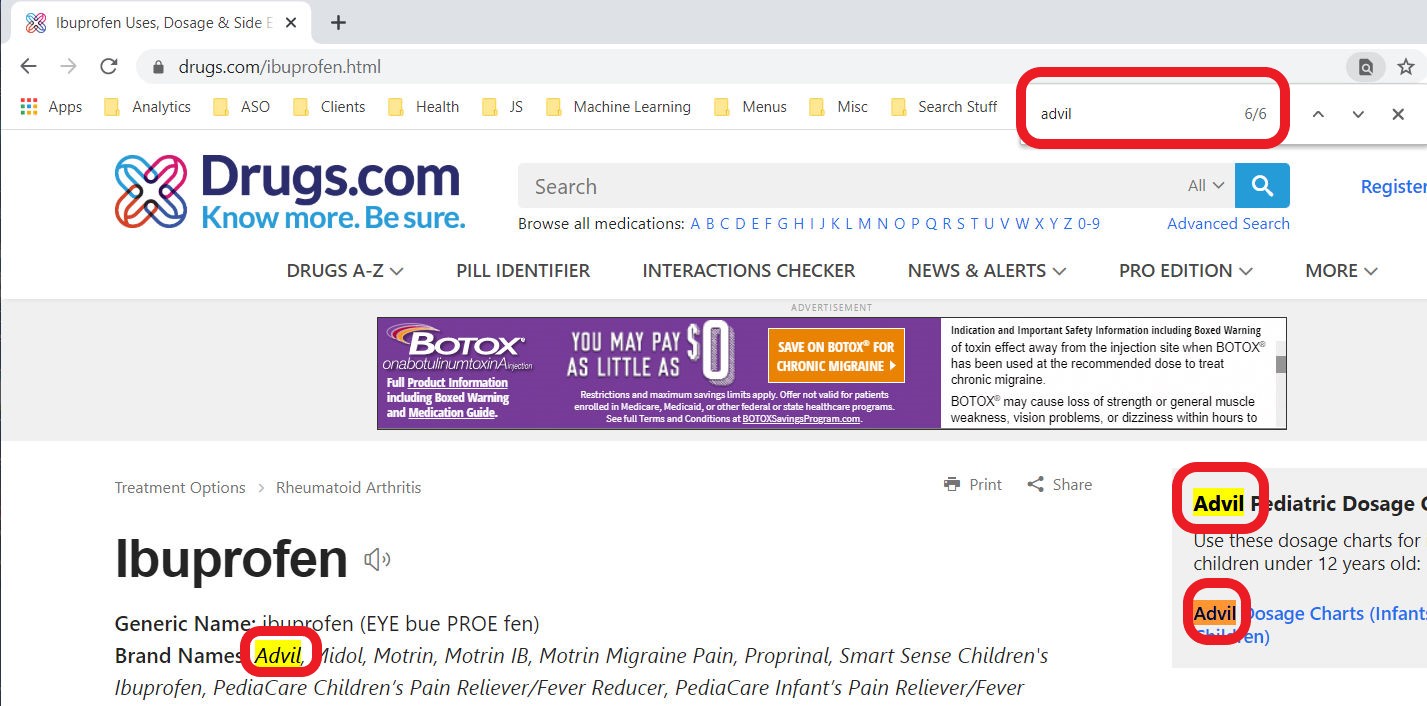
Notice how in the top right, I use Chrome’s search function to look for occurrences of the text “Advil” on the page, and it found six of them. I have circled three examples of that for your reference. By the way, Drugs.com has a page that ranks number two in Google for “Advil” too (behind Advil.com), and it’s a different page. The Advil page references “ibuprofen” 25 times.
So clearly, being able to address both audiences matters. If you’re like Drugs.com and need to address both audiences, you’ll need to create two different pages as they did. If you’re targeting only one of the audiences such as nurses, you’ll only need a page for ibuprofen, but it will also need to discuss Advil.
Challenge #4: B2B Players Can’t Offer B2C Experiences (Or Can They?)
Many B2B healthcare companies (such as medical products, device manufacturers, and medical supply distributors) may have a desire to also offer some of their products directly to consumers. That can be a tricky path to walk as this could put them in competition with some of their B2B customers.
What Bard did in the catheter space is an interesting example, as they acquired Liberator Medical for $181M. Liberator Medical continues to operate as a separate entity, and Bard has indicated its intention to distribute additional products through its channel. This level of separation has allowed Bard to continue its business as usual, while Liberator Medical operates independently.
Medline took a different approach and launched a subdomain at athome.medline.com. The subdomain targets consumers while the rest of their site is focused on providing supplies to healthcare professionals.
While both of these scenarios involve the companies potentially competing from a business perspective with their customers, the story is a bit easier from an SEO perspective. Each company operates a separate web property (a different domain for Bard, and a separate subdomain for Medline) that enables them to be separately optimized. The key to making this work is to focus your content and messaging in a natural way based on the differences in your target audiences.
That may sound easier than it is—consider these three critical factors in the process:
- Don’t reuse content from one site on the other.
- Use different content creators for each site.
- Thoroughly research and understand the difference in the terminology and the various target audiences’ needs, then target your content appropriately.
Challenge #5: Lack of Unique Content (for Manufacturers and Retailers)
For distributors of medical supplies and retailers (such as pharmacies and B2C device suppliers), there is the challenge of finding good descriptive content to put on the pages of the products they’re selling. Of course, the manufacturers try to make this much easier for you by providing you with product descriptions you can use.
However, this is not helpful from an SEO perspective. The challenge is that the manufacturer provides that same copy to everyone to whom they sell their products. Google sees this same description across dozens or even hundreds of sites across the web. The result is that no one stands out, and for SEO purposes, we want our site to be viewed as exceptional.

The easy fix is to write your own descriptions for these products; however, that can be very challenging if you are distributing or e-tailing hundreds or thousands of products, as it’s not practical to rewrite them all. There are a couple of key things you should do:
- Focus on creating great, unique content for the most essential pages on your overall site. These are the home page, the major category pages, and your best-selling product pages. If you can make these top pages on your content great, they can help improve Google’s perception of all your site’s pages.
- As you do this, don’t focus on adding marketing messages, and don’t simply take the manufacturer’s description and re-spin it to change the words without changing the value of the content. Invest in the content to provide users with new and additional information to help them make better buying decisions.
This simple approach will improve the user’s experience with your site AND help you with your rankings in Google.
Challenge #6: Adapting to New Market Conditions
2020 has brought some unprecedented challenges to the marketplace. In-person visits are down, and interest in telehealth is far higher than it historically has been. This chart from Google Trends shows the relative search volume on “telehealth” over time:
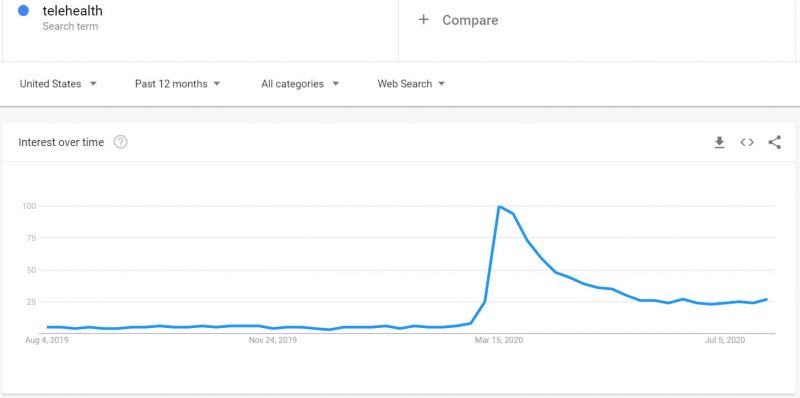
Even after the sharp peak in March came back down, the ongoing search volume is five to six times higher than the historical average. Some doctors continue to offer only virtual visits. Queries like hand sanitizer saw an obvious explosion in March. Even after it came back from that high peak, the ongoing search query volume is more than fifteen times higher than the historical average.
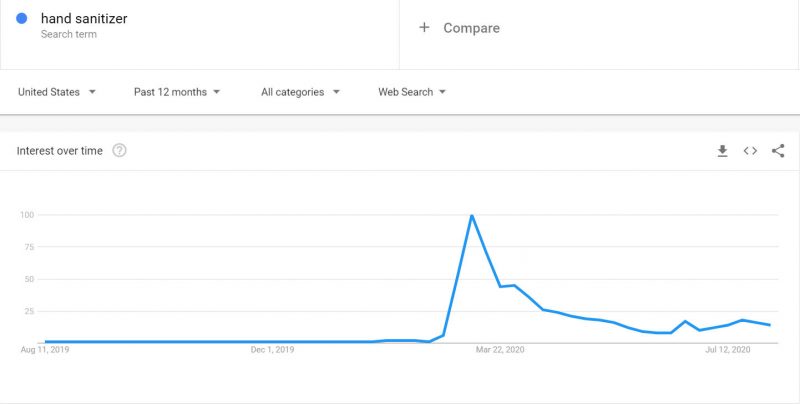
Hand sanitizer demand remains so high because of the expectation that you can access it wherever you go. For example, the increase in usage levels at hospitals and long-term healthcare facilities is likely to become a permanent change in the market. On the downside, some queries saw a significant dip in historical volumes. For example, knee surgery experienced a considerable drop and then recovered to a degree, but it is still down a bit:
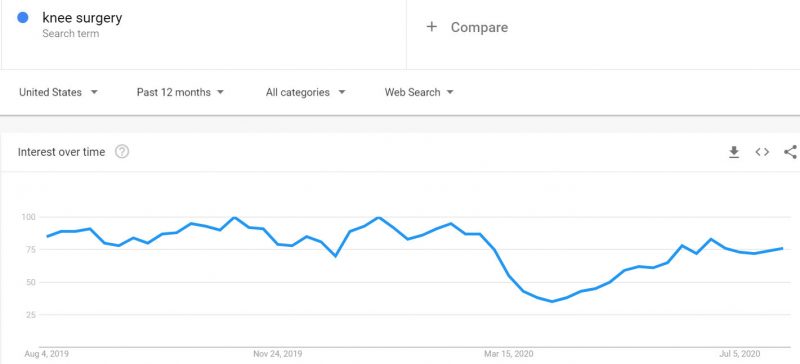
The searches show an interesting contrast for oral surgery.
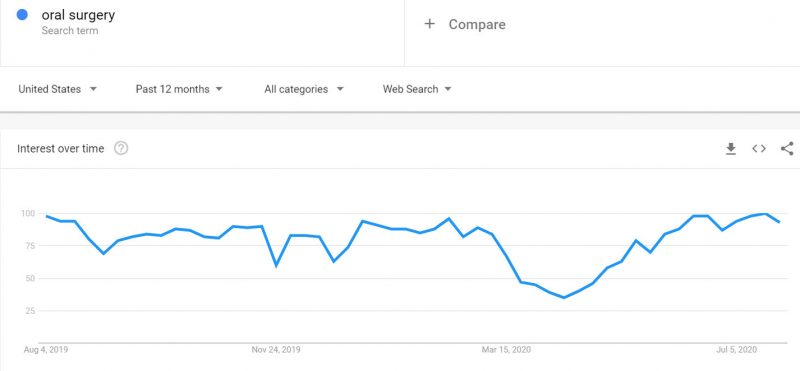
Here, the overall volume of searches over the past few weeks is at record levels, likely because many people put this off once the pandemic hit, and now that restrictions have eased a bit, a lot of people are trying to get caught up. It may be that the demand for oral surgeries will continue to scale up for a while longer.
This leads to the big question: how can you uncover these types of observations? There are a number of tools available to help with this effort. One excellent free tool is Google Trends used for the illustrations above. One of the great things about Google Trends is it provides pretty close to real-time data.
Paid tools that can help with uncovering this type of data are SEMrush, Searchmetrics, and BrightEdge. These tools are not as real-time at Google Trends and are limited to the search phrases they track. However, they can still provide a great deal of information on search histories over the past six months. By studying search trends, you can learn what’s happening in the market and use that data to adjust your strategy.
Another great data source is Google. For more focused research on trends over time, use the date range operator, as shown in this illustration:
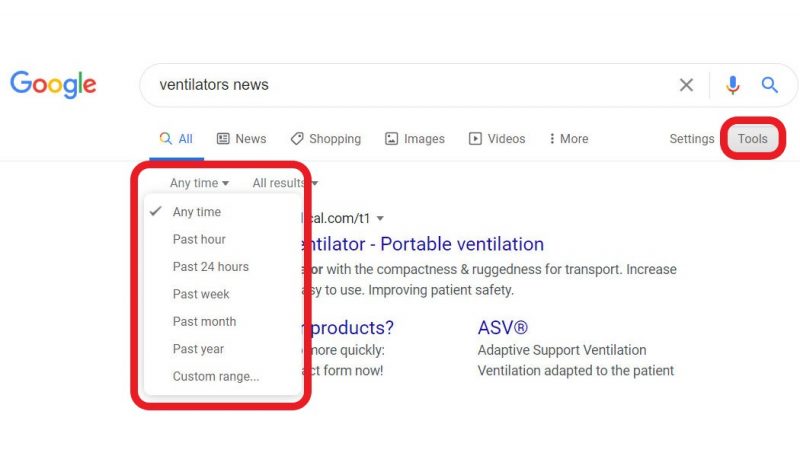
Click on Tools (circled in red at the top right), and you will be offered the choice of “Any Time” and “All Results as shown over on the left (“Any Time” is circled in red as well). Once you click on “Any Time,” you will get the drop-down menu that you can use to enter a custom date range. You can use this feature to do queries over custom date ranges and see what has happened in the news over time. For example, here is a query for “ventilators news” done for the date range April 1, 2020 to June 30, 2020:
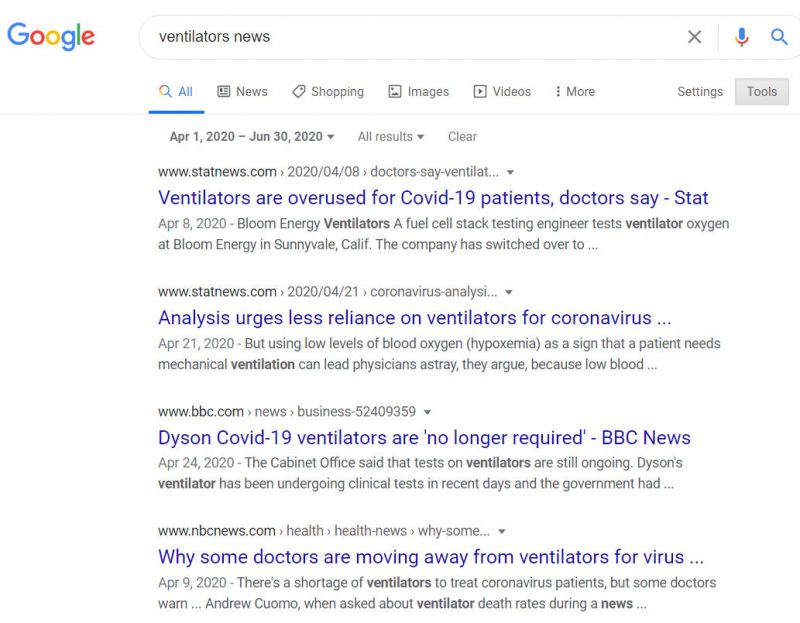
These types of tools can help you identify and track market behavior and trends over time. With them, you can begin to develop a keen insight into human behavior changes since March 2020. That then enables you to develop a better understanding of what is likely to happen going forward. These types of insights can help you make better bets on what is likely to be more critical for your business over the next six months.


The biggest challenge will involve dealing with guest blogs and how to include them in your link-building strategy without hurting your practice’s reputation. Google has warned publishers that there will be a closer look at guest blogs in order to control spammy links.
Thank you Eric, for sharing this information with us. SEO truly is an important aspect in a healthcare related business and these challenges that were presented shed some light on the struggles regarding these businesses. Developing a proper SEO strategy is a must and must be conducted in response to the current status of the website, the traffic and the leads it generates.